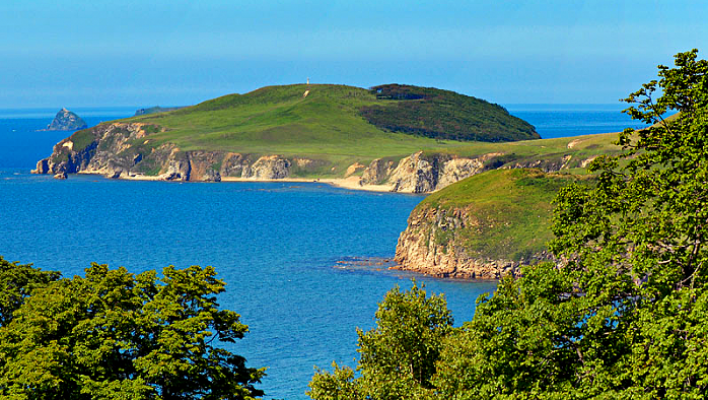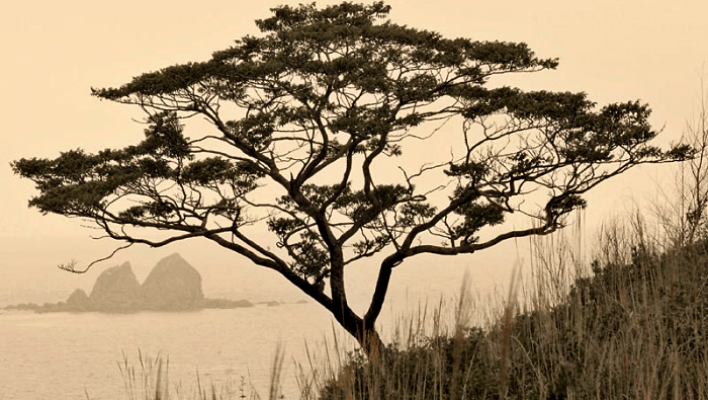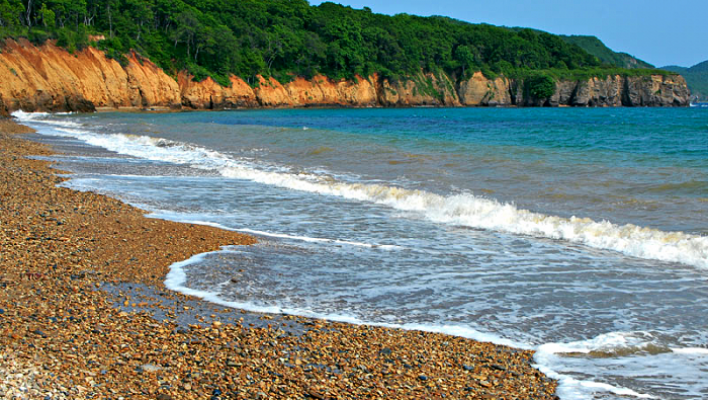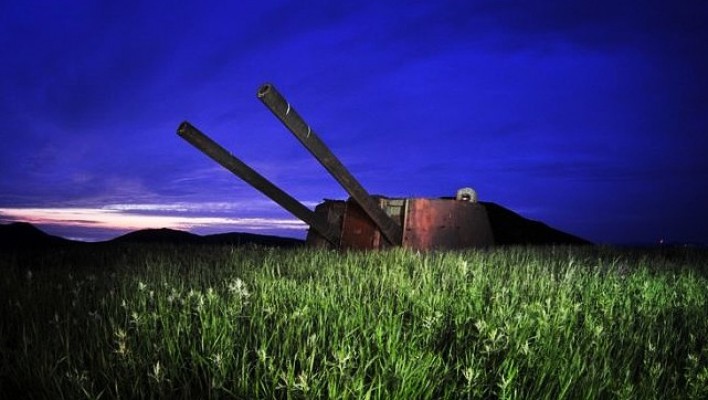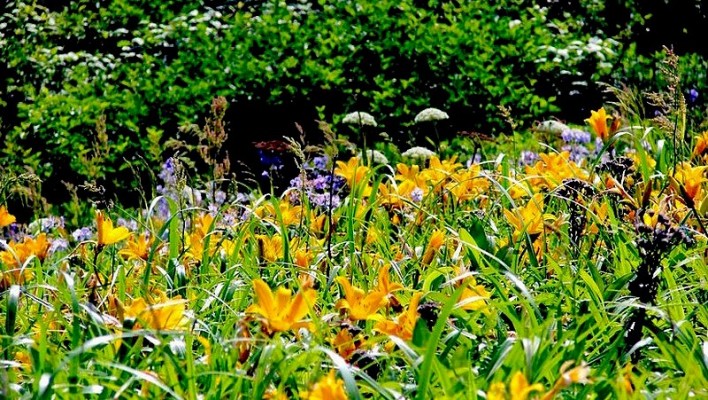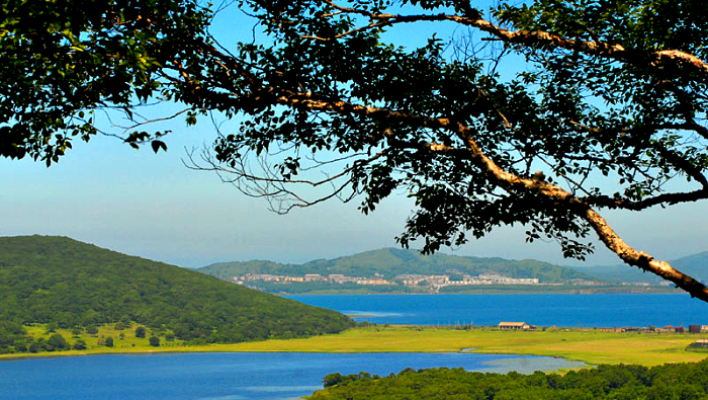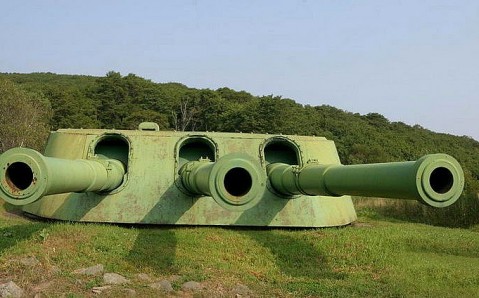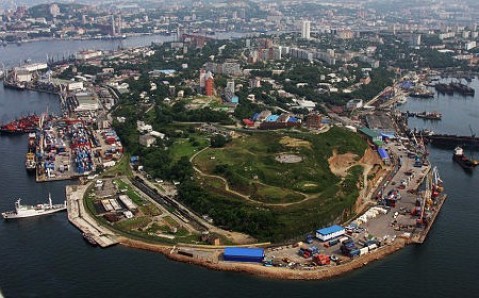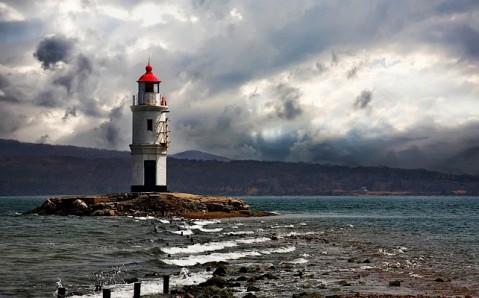Islands in the Peter the Great Gulf
The Peter the Great Gulf - the largest and the most picturesque one in the Japanese Sea - is famous for its azure bays, fantastic underwater landscapes, clean beaches and rocky capes of unimaginable forms. Its main treasure, however, is a number of mysterious islands that are peculiarly scattered in the sea waters. Some of them are famous for their role in the Primorsky Krai's history, others - for the inimitable fabulous nature... But either of them is Vladivostok's locals' and guests' favourite place for secluded and active recreation.
Popov Island
It is the second largest island - after the Russky - in the Peter the Great Gulf. It is located in 20 kilometers from Vladivostok and is named after Admiral Andrey Popov who commanded the Pacific squadron in the middle of the 19th century. Being one of the most visited islands in the Gulf, it is the most popular place among the residents of the Far East.
Despite the proximity to the city, the Popov Island managed to preserve its primeval nature: marvelous grottos, intricate rocks, age-old forests and their inhabitants. Today the greater part of the island is protected territory. In the first place, it is famous for hosting the Far Eastern Sea Reserve's only part that is opened for visiting. There is an opportunity to visit the unique Museum of Nature telling about diverse flora and fauna of the Peter the Great Gulf, as well as the island botanical garden.
The most visited place on the island is the Pogranichnaya Bay featuring large sand and pebble beach. Its sea is clean and well warmed up in summer, making the bay a perfect place for recreation with kids. In addition, its coast commands fantastic views over the gulf and its numerous islands.
People interested in active recreation, especially in scuba diving, love the Popov Island too. Considering striking diversity of local underwater landscapes and the plenty of exotic animals, there is no surprise in that. Island's true attraction is the motley carpet of sea stars that covers the seashore.
Fortifications built in the early 20th century for protection of the sea approaches to Vladivostok are preserved on the Popov Island, the same as on many other islands in the Peter the Great Gulf. In particular, the coastal battery № 901 - the command post atop the knoll and the weapons site in the dingle - has survived here.
Several tourist bases and holiday centers function on island's territory.
Getting here. You can take a ferry or a cutter from Vladivostok (1 hour 40 minutes).
Reyneke Island
The Reyneke Island is located in 25 km from Vladivostok and is named after the famous hydrographer Mikhail Reyneke. Along with Popov Island, it is among the most popular summer recreation places for Primorsky Krai's residents and guests.
Its main treasure is the unique nature: picturesque cliffs with multitude of cozy bays and lagoons, peculiar relief, clean sea, various beaches, rich flora and fauna. Island's relatively small territory features mountains and meadows covered with motley floral carpets, rocks of intricate colors and fabulous grottos. Its highest point commands impressive views over fantastic landscapes and surrounding islands.
Convenient beaches and shallow bays with clean waters make the Reyneke Island an attractive recreation place during the summer and autumn seasons.
Getting here. Take a ferry from Vladivostok.
Putyatin Island
Located near Vladivostok, the Putyatin Island bears the name of the Russian seaman and statesman Yevfimy Putyatin. It is one of the most visited islands in the Peter the Great Gulf. It attracts with unique beautiful sceneries, marvelous rocks, pure sea and sandy beaches, along with fantastic flora and fauna: dapples deer, crabs, octopuses, sea-urchins.
The Putyatin Island is often nicknamed paradise on earth because of its fabulously beautiful nature. One can well believe this definition seeing the famous Gusinoye Ozero (literally: Goose Lake) covered with unusual gently rose lotuses that can be found only in the Far East and are listed in the Red Book.
The island is famous for its lagoon bays that are perfectly suitable for recreation. The most outstanding ones are the Turtle Bay, the Rooster Bay and the Elephant Bay. They got such names because of unusual capes, whose forms are reminiscent of these animals. Another local natural wonder is the archipelago Pyat Paltsev (literally: Five Fingers) that stretches to the Askold Island. These are high stone pillars jutting out of the water and looking like huge fingers, which can be seen from any point on the island. Flocks of sea birds often gather near these amazing rocks.
The ruins of the local entrepreneur's Aleksey Startsev's family manor are also reckoned among the Putyatin Island's sights. In the late 19th century, he owned several plants and plantations on the island, cultivated tobacco and produced famous china sets. Once, fruit groves grew and deer reserve, fox, mink and stud farms functioned on the manor's territory.
The Putyatin Island offers varied recreation opportunities: strolls along the rocky coastline, sea scuba diving, fishing on cutters, beach recreation.
Getting here. Go to Dunay settlement by bus and then take a ferry to the island.
Rikord Island
Named after the Russian admiral and traveler Pyotr Rikord, the Rikord Island is the largest deserted island in the Peter the Great Gulf. Thanks to amazing nature, clean waters and marvelous beaches it is the perfect place for summer recreation.
Island's beaches are predominantly pebbly, formed by large pinkish pellets. The coastline is peculiarly cut, sheer cliffs of the high southeastern coast drop steeply into the sea. Rikord Island's rich underwater world makes it attractive for scuba divers. Many fish species, mussels and scallops, sea cucumbers and trepangs live in its coastal waters. One can also see a spotted seal, a dolphin, and with some luck even a whale here. Sea birds - petrels, rhinoceros auklets and black-tailed gulls - nest on the island.
Greater part of Rikord Island's territory is covered with dense forests consisting mainly of oak and lime. They interchange with meadows covered with glades of irises, lilies and bluebells. Picturesque red and black cliffs add attractiveness to the island.
Tent camp and children camp function on the Rikord Island in summer.
Getting here. There are no official ferries to the Rikord Island, hence, the only way to reach it is to use private cutters' services.

